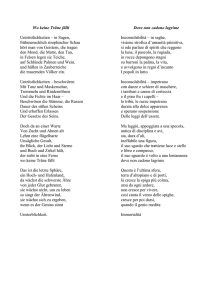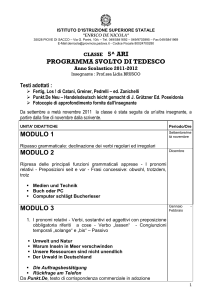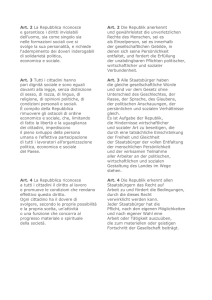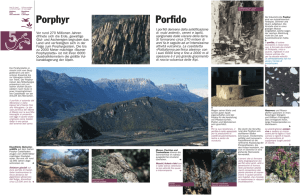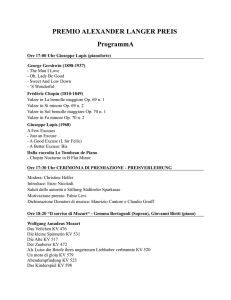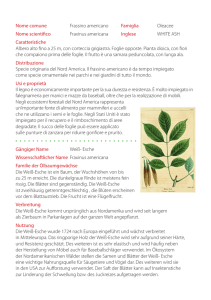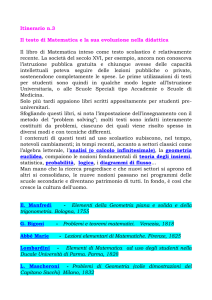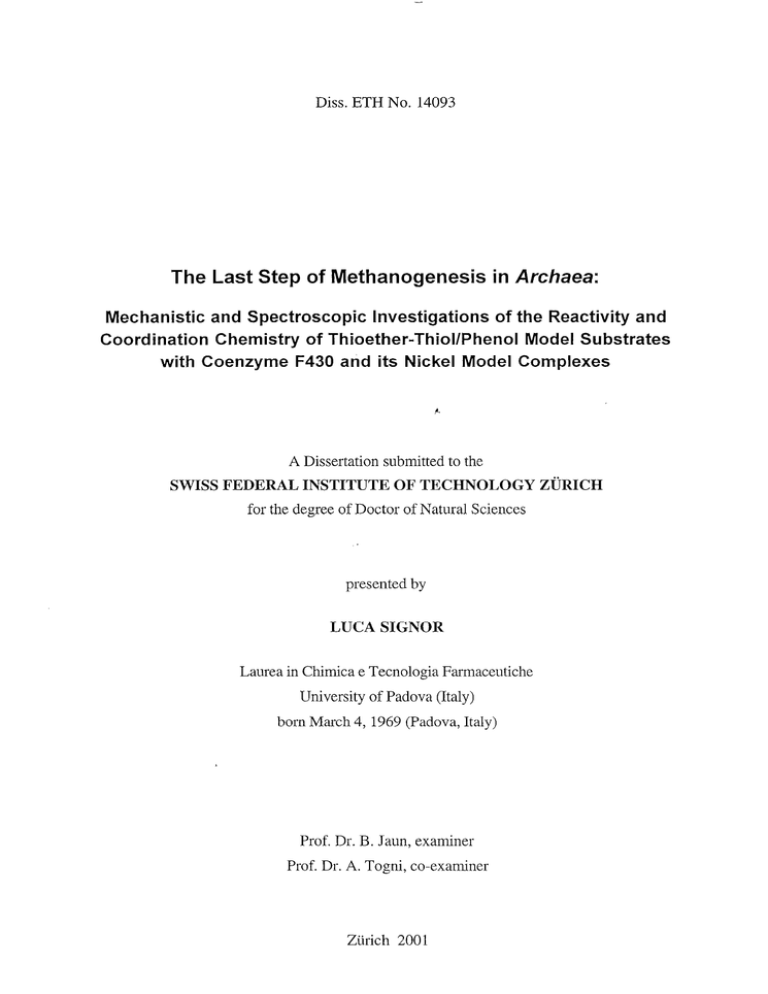
Diss. ETH No. 14093
The Last Step of Methanogenesis
in Archaea:
Mechanistic and Spectroscopic
Investigations
of the Reactivity and
Coordination
Chemistry of Thioether-ThiollPhenol
Model Substrates
with Coenzyme F430 and its Nickel Model Complexes
A Dissertation submitted to the
SWISS FEDERAL
INSTITUTE
OF TECHNOLOGY
for the degree of Doctor of Natural Sciences
presented by
LUCA SIGNOR
Laurea in Chimica e Tecnologia Farmaceutiche
University of Padova (Italy)
born March 4, 1969 (Padova, Italy)
Prof. Dr. B. Jam, examiner
Prof. Dr. A. Togni, co-examiner
Ziirich 200 1
ZURICH
Summary
Summary
The last step of methane formation in methanogenic Archaea is catalyzed by the
hydrocorphinoid nickel complex coenzyme F430 (l), which is the prosthetic group of
methyl coenzyme M reductase (MCR). The catalytic mechanism of F430 is so far
unknown.
COOR
1 Coenzyme F430 (R = H, X = ClO,)
la Coenzyme F430M (R = CH,, X = ClO,)
Biophysical investigations by means of EPR spectroscopy have shown that the Ni(1)
valence state of F430 is formed in whole cells and that the intensity of the Ni(1) EPR signal
is correlated with the catalytic activity of enzyme preparations.
Earlier mechanistic studies carried out in our group had shown that Ni(I)F430M (la) reacts
with electrophilic methyl donors (i.e. methyl sulfonium ions) to give methane via a methylNi(II)F430M
intermediate. However the natural substrate methyl coenzyme M or simple
methyl thioethers were inert against Ni(I)F430M.
These observations could mean that the thioether is activated in ~ivo and prompted
us
to
propose and study a different mechanism in which the addition of a thiyl radical (R-S.) to
the sulfur atom of the thioether giving a sulfuranyl radical (R(R,)-S.-S-R,)
intermediate towards Ni(I)F43OM is the central step (suZfim7zyZ
as the reactive
radical mechanism).
Summary
1. Detailed analysis of the photo reaction of Ni(ll) bifunctional methylthioether-thiolates
giving methane and disulfides (Chapter 2)
In order to test the sulfuranyl radical mechanism, a sterically shielded bifunctional model
substrate (15) containing a methyl thioether and a sulfhydryl function that could form a five
membered cyclic sulfuranyl
radical according to the postulated mechanism was
synthesised. The corresponding thiolate reacted with Ni(I1) salts to give a diamagnetic,
square planar Ni(II)-dithiolate complex which was characterized by X-ray diffraction. Upon
irradiation of this complex with light of it > 300 nm, methane and the cyclic disulfide 17
were formed, whereas irradiation of the thiolate in the absence of nickel gave only traces of
methane and no cyclic disulfide. The observed products are consistent with the postulated
mechanism via a sulfuranyl radical and the role of light is interpreted as the formation of a
Ni(I)/thiyl radical pair upon excitation of a charge transfer band of the Ni(II)-dithiolate.
In
the presence of a large excess of thiolate, the diamaghetic complex was transformed into a
paramagnetic, five- or six-coordinate complex which proved to be more active in the
generation of both, methane and the cyclic disulfide, than the square planar diamagnetic
dithiolate.
17
15
2. Axial coordination
chemistry of Ni(//)F430M
(Chapter 3)
The axial coordination chemistry of F430M in unpolar non coordinating solvents with
aliphatic and aromatic thiolates (1-propanethiolate, thiophenolate) and with thioetherthiolates and thioether-phenolate ligands corresponding to 15, 28, 29 and 30 has been
investigated by means of UV/Vis spectroscopy at room temperature and at low temperature.
SH
15
28
29
30
Summary
Our studies established that thiophenolates, thioether-thiophenolates and aliphatic thiolates
are able to coordinate axially to coenzyme F430M to form both penta- and hexa-coordinate
complexes. The corresponding stability constants K, and K2 have been calculated by nonlinear fitting.
3. Spectroscopic
investigation
of the Ni(l) and Ni(lll) forms of F430M (Chapter 4)
In the group of R. K. Thauer highly catalytically active forms of the enzyme MCR in states
that show both, the MCR,,,,, and the still not assigned MCR,,,, EPR signals were recently
isolated. This offered the opportunity to investigate these enzyme states by biophysical
methods, in particular MCD spectroscopy and EPR/ENDOR/ESEEM techniques.
The major unsolved problems are the assignement of nickel valence states to the different
MCR forms and the nature of the species causing the tmique rhombic MCR,,, signal.
In a collaboration with the groups of A. Schweiger (ETH-Ziirich),
M. K. Johnson
(University of Georgia-Athens, U.S.A.) and R. K. Thauer (Marburg; Germany), we set out
to prepare the free coenzyme or its pentamethyl ester in the Ni(1) and Ni(II1) valence states
in order to use them as reference structures in spectroscopic investigations and in the
comparison of their MCD and EPIUENQOWESEEM
its different states.
spectra with those of the enzyme in
Zusammenfassung
Zusammenfassung
Der letzte Schritt bei der Bildung von Methan in methanproduzierenden Archaea wird
durch die prosthetische Gruppe
der Methyl-Coenzym-M-Reduktase
(MCR),
dem
Nickelkomplex Coenzym F430 (l), katalysiert. Der Mechanismus der Katalyse von F430
ist bis jetzt unbekannt.
1 Coenzyme F430 (R = H, X = CIO,)
la Coenzyme F430M (R = CH,, X = ClO,)
Biophysikalische Untersuchungen mittels ESR-Spektroskopie haben gezeigt, dass in
intakten Zellen der Ni(I)-Zustand von F430 auftritt und dass die Intensitat des Ni(I)-ESRSignals mit der katalytischen Aktivitat der gewonnenen Enzympraparate korreliert ist.
Friihere mechanistische Untersuchungen unserer Gruppe haben ergeben, dass Ni(I)F430M
(la) mit elektrophilen Methyldonoren
Ni(II)F430
als Ztiischenprodukt
ZLI
(z.B. Methylsulfoniumionen)
iiber ein Methyl-
Methan umgesetzt werden kann. Trotzdem waren das
natiirliche Methylcoenzym M oder einfache Methylthioether inert gegen Ni(I)-F430M.
Diese Beobachtungen kiinnten darauf hinweisen, dass der Thioether in vivo aktiviert wird.
Das veranlasste uns, einen anderen Mechanismus vorzuschlagen, bei den1 die Addition
eines Thiyl-Radikals (R-S.) an das Schwefelatom des Thioethers der zentrale Schritt ist
(SulfLlmrzyl-Rndiknl-Mechnnismus, nach dem als re‘aktives Zwischenprodukt entstehenden
Radikal: R(R,)-S.-S-R,).
Zcisammenfassung
1. Detailietfe Untersuchung der Photo-Reaktion
zu Methan und Disulfiden (Kapitel 2)
Ni(//)-Methylthioether-thiolaten
Urn die Sulfuranyl-Radikal-Hypothese
bifunktionales-Modellsubstrat
von bifunktionalen
(15)
zu tiberprtifen, wurde ein sterisch abgeschirmtes
synthetisiert.
Diese
Verbindung
enthalt
eine
Methylthioether und eine Sulfhydrylfunktion, die nach dem vorgeschlagenen Mechanismus
ein ftinfgliedriges zyklisches Sulfuranyl-Radikal bilden kiinnen. Das entsprechende Thiolat
reagierte mit Ni(II)-Salzen
einem diamagnetischen, quadratisch-planaren Ni(II)-
ZLI
Komplex, der durch Rontgendiffraktion charakterisiert werden konnte. Nach Bestrahlung
dieses Komplexes mit Licht von il > 300 nm entstanden Methan und das zyklische Disulfid
17. Bei Bestrahlung des Thiolats in Abwesenheit von Nickel entstanden nur Spuren von
Methan und kein zyklisches Disulfid. Die beobachteten Produkte sind konsistent mit dem
postulierten Mechanismus tiber ein Sulfurany-Radikal. Die Rolle des Lichts kann im Sinne
der Bildung eines Ni(I)iThiyl-Radikal-Paares interpretiert werden, das nach Anregung einer
Charge-Transfer-Bande des Ni(II)-Dithiolats
entsteht. In Anwesenheit eines grossen.
Ueberschuss von Thiolat wurde der diamagnetische Komplex in einen paramagnetischen,
fiinf- oder sechsfach koordinierten Komplex umgewandelt. Wie sich herausstellte, war
dieser aktiver als das quadratisch planare diamagnetische Dithiolat, sowohl bei der Bildung
von Methan als such des zyklischen Disulfides.
SH
S
AH3
15
2. Axiale Koordinationschemie
Die
17
von Ni(ll)F430M
axiale Koordinationschemie
Liisungsmitteln
mit
von F430M
aliphatischen
und
(Kapitel 3)
in apolaren, nicht
aromatischen
Thiolaten
koordinierenden
(1-Propanthiolat,
Thiophenolat) und mit Thioether-Thiolaten und Thioether-phenolaten wie 15, 28, 29, 30 als
Liganden wurde mittels UVNis-Spektroskopie
bei Raumtemperatur und bei tiefen
Temperaturen untersucht. Unsere Studien ergaben, dass Thiophenolate, Thioetherthiophenolate und aliphatische Thiolate in der Lage sind, axial an Coenzym F430
koordinieren
und fiinf-
und sechsfach koordinierende
Komplexe
ZLI
bilden.
zu
Die
Zusammenfassung
entsprechenden Stabilitgtskonstanten K, und K2 wurden durch nicht-lineares Fitten
bestimmt.
!iCH3
29
28
15
3. Spektroskopische
30
Untersuchung von Ni(l)- und Ni(lll)-Formen
von F430M
(Kapitel 4)
In der Gruppe von R. K. Thauer wurden kiirzlich hochaktive katalytisch Formen der MCR
isoliert, die sowohl das MCR,,,,, als such das noch nicht zugeordnete MCR,,,, ESR-Signal
aufweisen.
Das bot die Gelegenheit diese Enzym-Zustgnde mittels biophysikalischer Methoden wie
MCD-Spektroskopie oder ESR/ENDOR/ESEEM-Techniken
ZLI
untersuchen.
Die griissten ungelijsten Probleme sind die Zuordnun, 0 der Nickel-Valenz-Zust2nde
ZLI
den
verschiedenen MCR-Formen und die Art der Spezies, die das einzigartige rhombische
MCR,,,,-Signal
erzeugt. In Zusammenarbeit mit den Gruppen von A. Schweiger (ETH-
Ziirich), M. K. Johnson (University of Georgia-Athens, USA) und R. K. Thauer
(Marburg) sind wir damn, das freie Coenzym oder seinen Pentamethylester in den Ni(I)und
Ni(III)-Valenzzust&den
Referenzstrukturen
Wir
werden
diese Verbindungen
verwenden bei der Spektroskopischen Untersuchung
Vergleich ihrer MCD
Enzymzusttinden.
herzustellen.
und ESR/ENDOR/ESEEM-Spektren
als
und dem
mit den verschiedenen
Riassunto
Riassun to
Nei microorganismi metanogenici Archaea l’ultimo stadio della biosintesi de1 metano i:
catalizzato dal coenzima F430 (1), un complesso idrocorfinoide contenente nichel, the e il
gruppo prostetico dell’enzima metil coenzima M reduttasi (MCR). 11meccanismo catalitico
de1coenzima F430 6 tuttora sconosciuto.
CH3
H2NOC
t
ROOd
r
‘i
1 Coenzyme F430 (R = H, X = CIO,)
la Coenzyme F430M (R = CH,, X = ClO,)
Studi biofisici tramite spettroscopia EPR hanno mostrato la presenza in cellule integre dello
stato di valenza Ni(1) de1coenzima F430. L’intensita de1 segnale EPR de1Ni(1) i: correlata
con l’attivita catalitica dell’enzima.
Precedenti studi sui possibili meccanismi di reazione condotti nel nostro gruppo hanno
dimostrato the Ni(I)F43OM
(la) i: in grado di reagire con substrati elettrofilici metil
donatori (es. ioni’metil solfonio). La reazione porta alla formazione di metano e passa
attraverso un intermedio metil-Ni(II)F430M.
Al contrario il substrato naturale dell’enzima,
il metil coenzima M ed altri analoghi metil-tioeteri risultano essere de1 tutto inerti verso
Ni(I)F430M.
Sulla base di questi risultati si pub dedurre the il tioetere e attivato in vivo. Di conseguenza
abbiamo proposto e quindi studiato un meccanismo di reazione alternativo in cui lo stadio
centrale i: rappresentato dall’addizione di un radicale tiilico (R-S.) all’atomo di zolfo de1
Riassunto
tioetere per dare come intermedio un radicale solforanilico (R(R,)-S.-S-R,)
il quale i: in
grado di reagire con il Ni(I)F430M (meccanismo de1radicale solforanilico).
1. Analisi dettagliata de/la fotoreazione
di substrati bifunzionali Ni(ll)-metiltioeteri-
tiolati a metano e disulfide (Capitol0 2)
Per poter verificare il meccanismo de1 radicale solforanilico, abbiamo sintetizzato un
substrato bifunzionale con ingombro sterico (15), contenete un gruppo met&tioetere ed uno
tiolico, in grado di formare un radicale solforanilico pentaciclico, second0 il meccanismo
postulato.
15, sotto forma di tiolato, reagisce con sali di Ni(I1) per dare un complesso diamagnetic0
Ni(II)-ditiolato con geometria quadrata planare il quale & stato caratterizzato con diffrazione
a raggi X. Tale complesso, irradiato con lute avente il > 300 nm, produce metano e il
corrispondente disulfide ciclico 17. Invece irradiando il tiolato in assenza di niche1 si
ottengono solo tracce di metano e il disulfide ciclico risulta essere assente. Questi prodotti
di reazione supportano il. meccanismo de1 radicale solforanilico ed il ruolo della lute i:
quell0 di eccitare la banda a trasferimento di carica de1 complesso Ni(II)-ditiolato
alla formazione di una coppia Ni(I)/rac@le
portando
tiilico. In presenza di un largo eccesso di
tiolato, il complesso diamagnetic0 si trasforma in un complesso paramagnetico, penta- o
esacoordinato, il quale risulta essere piti attivo, rispetto al complesso diamagnetic0 Ni(II)ditiolato a geometria quadrata planare, nella reazione the porta a metano e disulfide ciclico.
&‘cH3 &
15
2. Chimica di coordinazione
17
de/ coenzima Ni(//)F430M (Capitol0 3)
La spettroscopia UVNis, a temperatura ambiente e a bassa temperatura, 5 stata impiegata
per studiare la chimica di coordinazione de1 coenzima F430M (la) in solventi apolari non
coordinanti. Come leganti assiali sono stati utilizzati un tiolato alifatico (1-propantiolato) ed
-VTTT-
Riassun to
uno aromatic0 (tiofenolato) e i tioeteri-tiolati e tioeteri-fenolati corrispondenti ai derivati 15,
28,29e30.
I nostri studi hanno dimostrato the i tiofenolati, i tioeteri-tiofenolati e i tiolati alifatici sono
in grado di coordinare assialmente il coenzima F430M portando alla formazione di
complessi penta- ed esacoordinati. Utilizzando un fitting non lineare abbiamo calcolato le
corrispondenti costanti di stabilita K, e K2.
SH
28
15
3. Studi spettoscopici
29
degli stati di valenza Ni(l) e Ni(lll) corrispondenti
30
a F430M
(Capitol0 4)
Recentemente nel gruppo di ricerca de1 Prof. R. K. Thauer sono state isolate alcune forme
dell’enzima MCR con elevata attivitB catalitica. Tali preparazioni dell’enzima presentano i
segnali EPR MCR,,,, ed il non ancora noto MCR,,,,. Quest0 importante risultato ha offerto
l’opportunit& di investigare tali forme dell’enzima attraverso metodi biofisici, in particolare
tramite la spettroscopia MCD e tecniche di EPR/ENDOR/ESEEM.
Una delle maggiori questioni ancora irrisolte riguarda l’assegnazione degli stati di valenza
de1niche1 nelle differenti folme di MCR e la natura della specie the d2 origine all’insolito
segnale rombico EPR MCR,,,,.
In collaborazione con i gruppi di ricerca di A. Schweiger (ETH-Ziirich), M. K. Johnson
(University of Georgia-Athens, U.S.A.) e R. K. Thauer (Marburg, Germany), abbiamo
preparato campioni de1coenzima nativo o de1corrispondente estere pentametilico negli stati
di valenza Ni(1) e Ni(II1). Questi campioni sono stati utilizzati come sistemi modello per
studi spettroscopici e per un confront0 con gli spettri MCD e EPRLENDORBSEEM
dell’enzima nelle sue diverse forme.

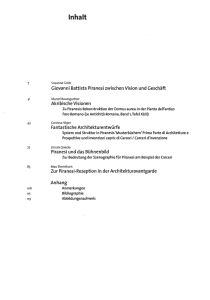
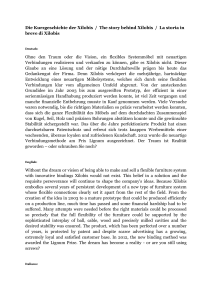
![Ricerca nr. 1 [MS WORD 395 KB]](http://s1.studylibit.com/store/data/000076742_1-2ede245e00e21c823e517529e1c3be46-300x300.png)

